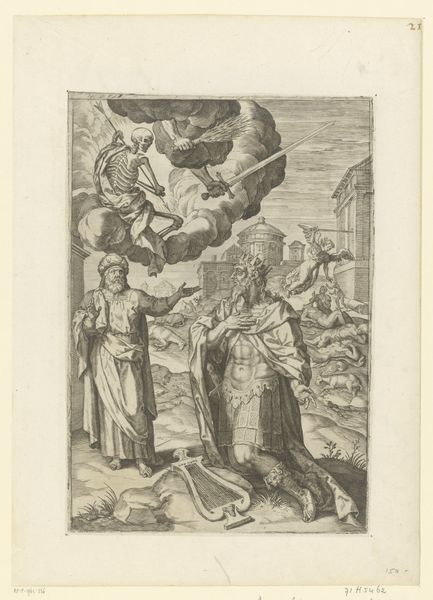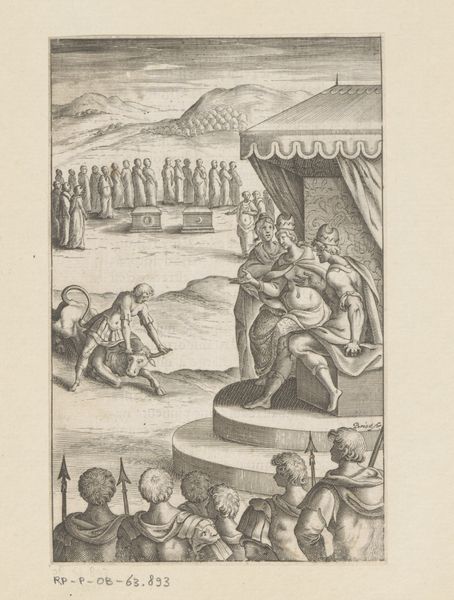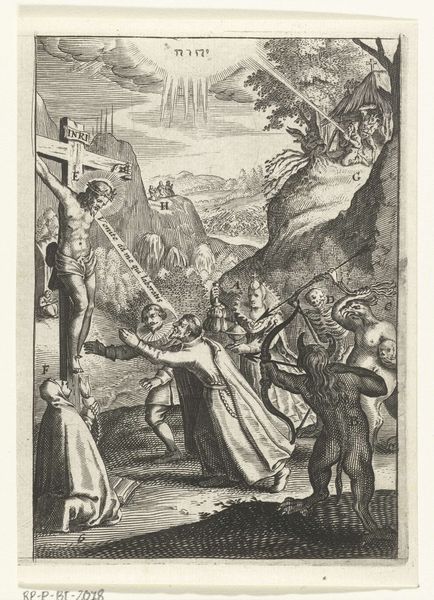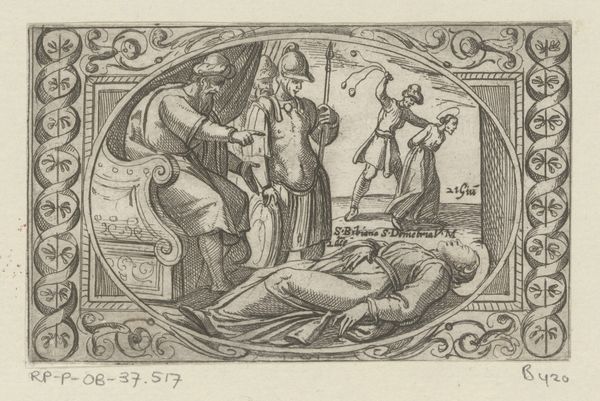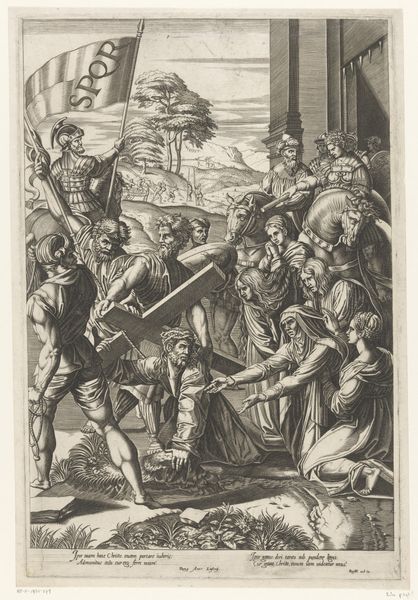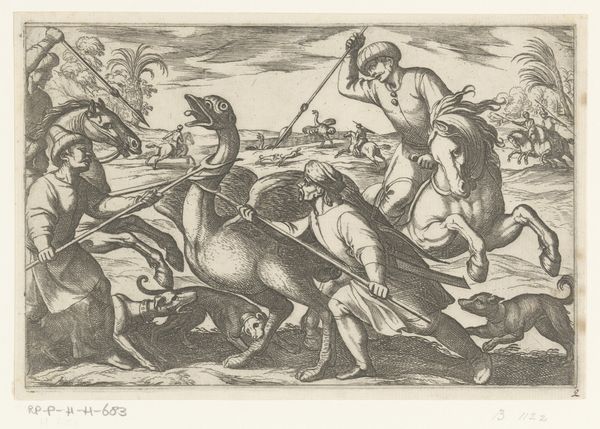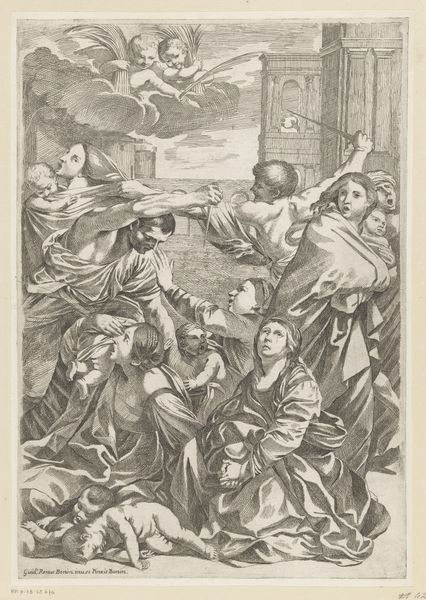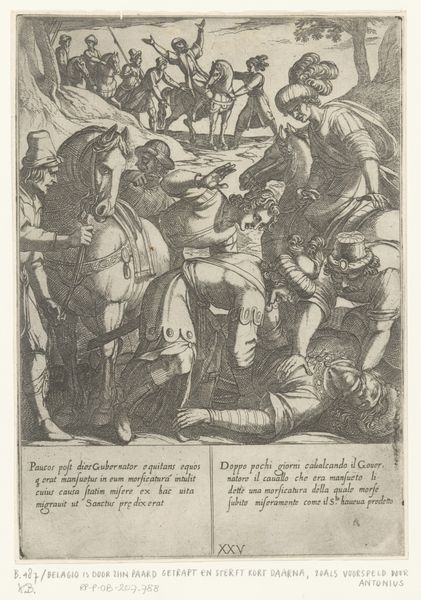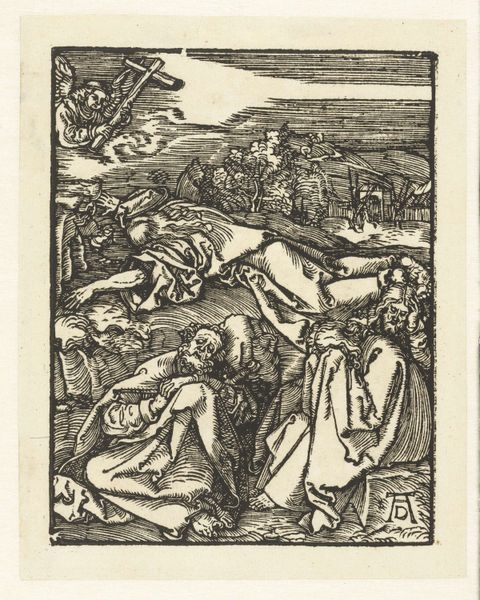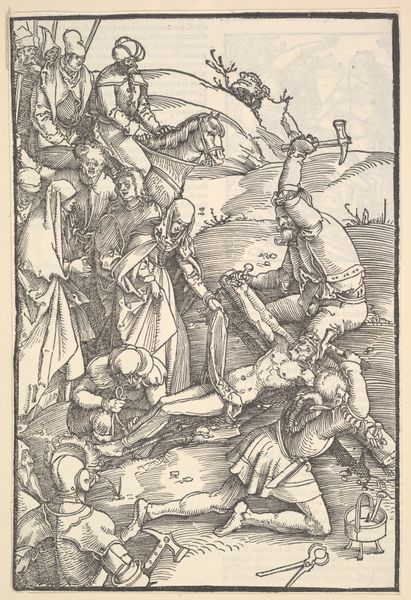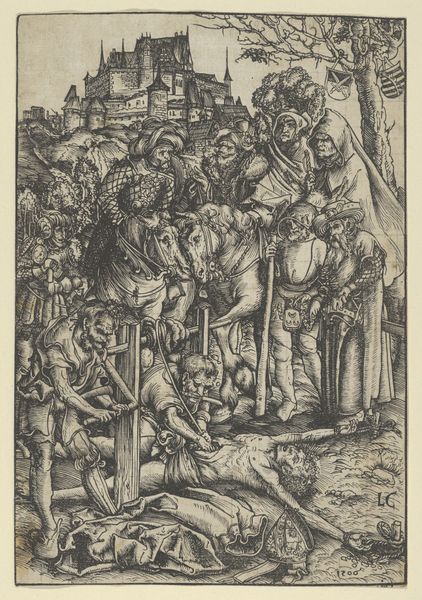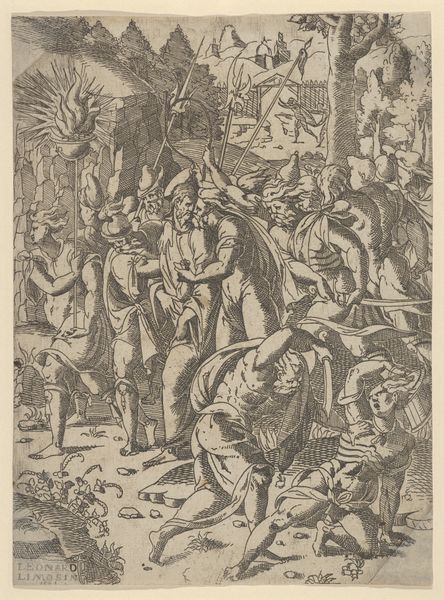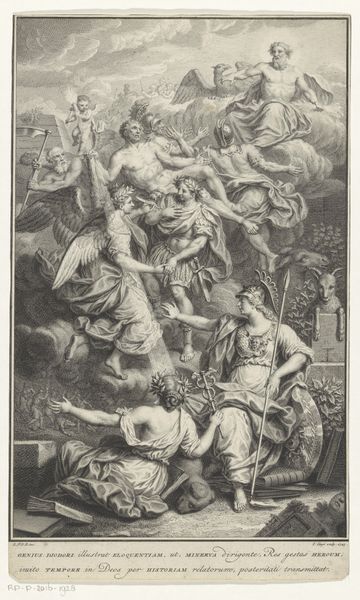
Foltering: van een brug afgooien en in een put laten vallen 1565 - 1630
0:00
0:00
#
comic strip sketch
#
pen illustration
#
pen sketch
#
old engraving style
#
junji ito style
#
cartoon sketch
#
personal sketchbook
#
pen-ink sketch
#
pen work
#
sketchbook drawing
Dimensions: height 194 mm, width 133 mm
Copyright: Rijks Museum: Open Domain
Editor: Here we have "Foltering: van een brug afgooien en in een put laten vallen" or "Torture: Throwing someone off a bridge and dropping them into a pit," dating from 1565-1630, by Antonio Tempesta, currently at the Rijksmuseum. The rendering style is very striking with a flurry of strokes and clear sense of drama, like sequential frames of action from top to bottom. What can you tell me about the historical or cultural context of such a brutal piece? Curator: Indeed, this image's brutal honesty viscerally connects us to a world quite different, yet unsettlingly similar, to our own. This was a period of significant social and political upheaval; think of the Reformation, the rise of nation-states, and intense religious conflict. Images like these, depicting torture, weren’t necessarily condemning the practice itself, but were often used as tools. The printing press allowed for a wider distribution of imagery than ever before, and images depicting legal proceedings or punitive actions against perceived threats allowed the state to broadcast a show of power. How might the intended audience’s view of state power affect their reception of this piece? Editor: I imagine that if the state wanted to convey its power, the violence and the fear in the drawing are very effectively communicated, but could such depictions have a reverse effect as well, possibly prompting people to see state powers as barbaric? Curator: Absolutely. Visual media always contains multiple interpretations. This piece probably functioned on both levels - a spectacle for those supporting the establishment, or a chilling image for dissenters. It’s worth considering that many would have believed the heretics to be a genuine existential threat. These displays were justified, often religiously, for ensuring the well-being of the collective. Editor: That is thought-provoking! I hadn't considered the image as part of a complex socio-political landscape rather than a simple snapshot of barbaric history. It offers such a richer understanding. Curator: Precisely. The power of historical artwork lies in its capacity to reflect and challenge our preconceptions. There is so much to unpack with these historical images!
Comments
No comments
Be the first to comment and join the conversation on the ultimate creative platform.
